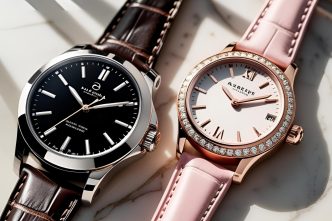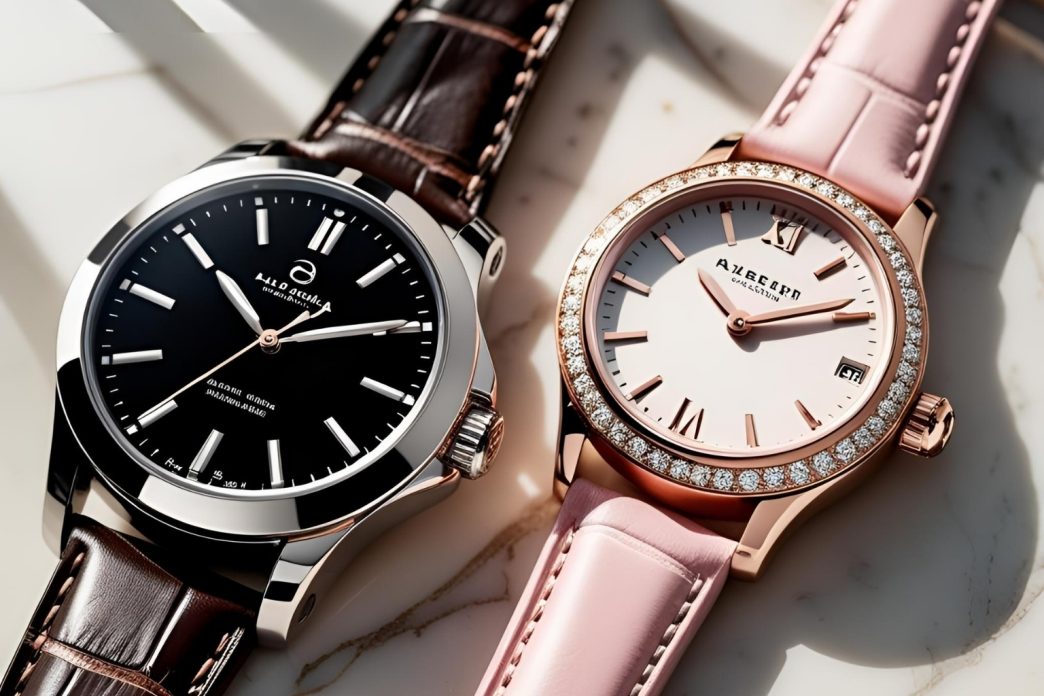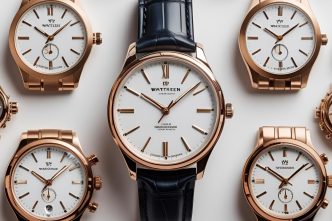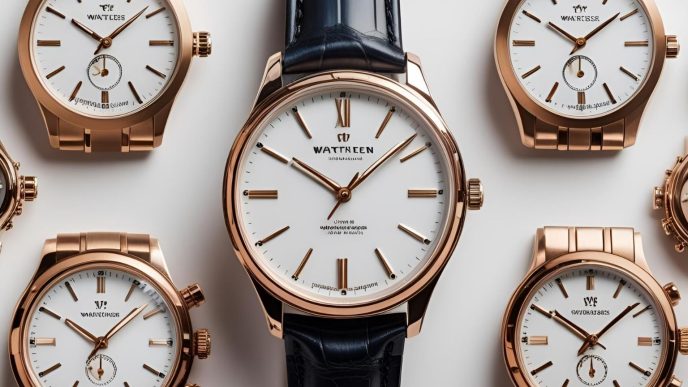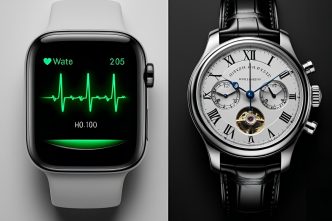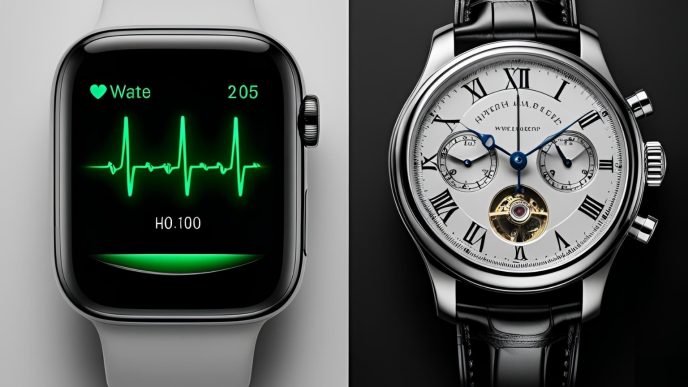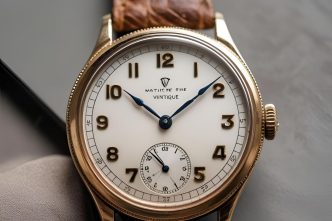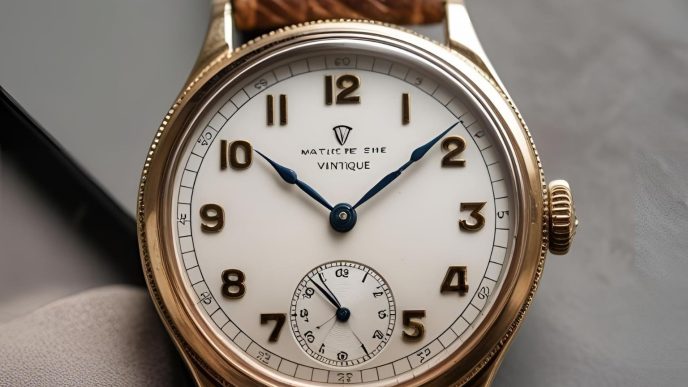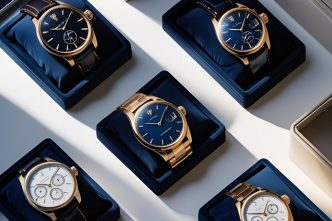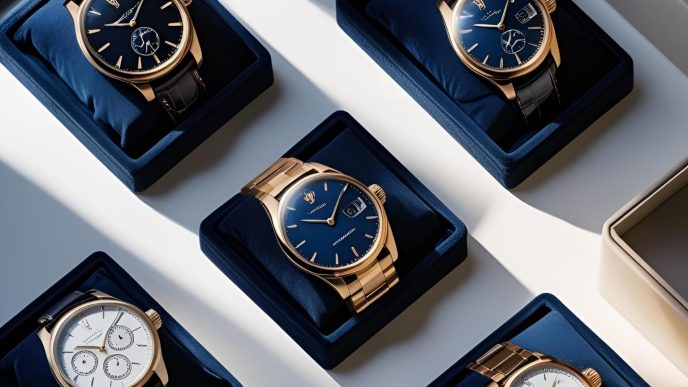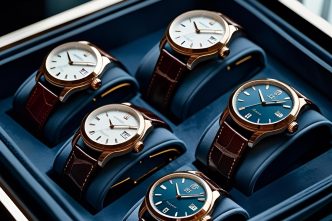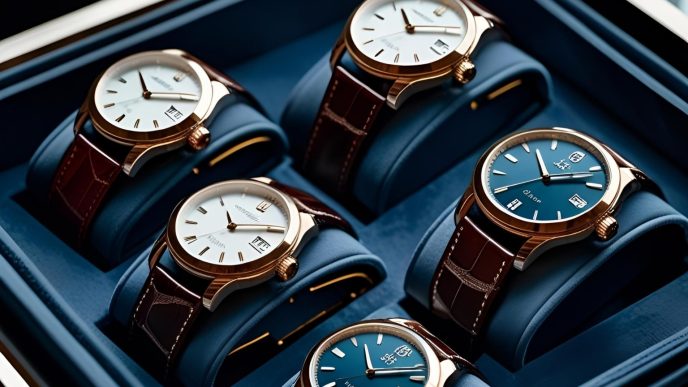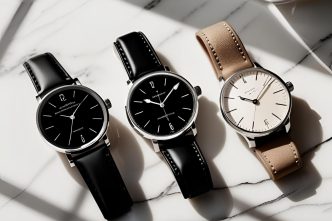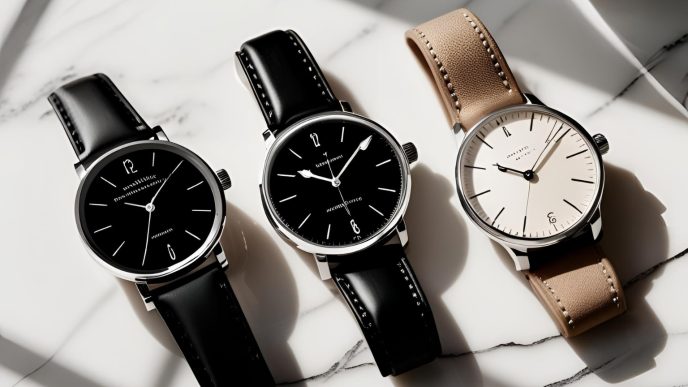Does Time Have a Gender? Exploring the Design Gap in Watchmaking
For decades, watch brands have categorized models as “men’s” or “women’s.” But how different are they really? Let’s examine the distinctions in size, color, straps, and functionality.
1. Case Size and Thickness
- Men’s Watches: Typically 40–45 mm diameter, thicker cases
- Women’s Watches: Smaller sizes around 26–36 mm, slimmer profiles
- Why? To match slimmer wrists and traditional elegance
2. Colors and Decorative Elements
- Men’s models favor dark tones like black, navy, or grey
- Women’s models often feature rose gold, pastels, or diamond accents
- Unisex designs are increasingly popular, breaking the old rules
3. Strap Types
- Men: Thick leather or stainless steel bracelets
- Women: Slim leather, ceramic, or finer metal bands
- NATO straps are widely used by all genders
4. Functionality Differences
Functionally, there’s little separation — though men’s watches more often include chronographs, GMT, or calendar features. Women’s models lean more into aesthetics.
Conclusion: Design Choice or Marketing Strategy?
More consumers now choose watches based on style and fit rather than gender labels. In the end, the best watch is the one that feels like an extension of you.


